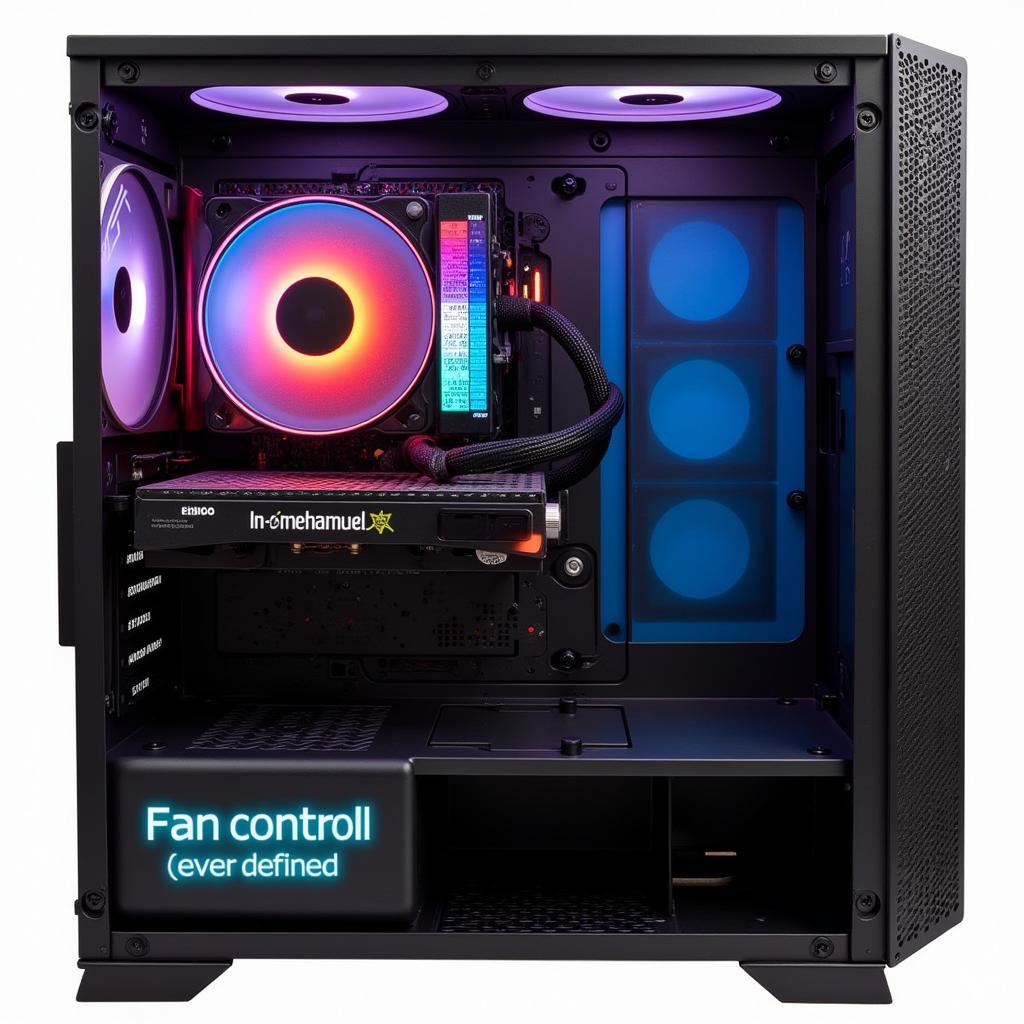Fan control refers to the ability to adjust the speed of fans within electronic devices, primarily in computers and laptops. This control mechanism allows users to optimize cooling performance while minimizing noise levels. Instead of running at a constant speed, fans can ramp up or down based on the temperature of components like the CPU, GPU, or even the system’s power supply.
Understanding the Importance of Fan Control
 Computer fan control illustration
Computer fan control illustration
Before diving into the “how” of fan control, it’s crucial to grasp the “why.” Electronic components generate heat, and excessive heat can lead to performance throttling, reduced lifespan, and even permanent damage. Fans play a critical role in dissipating this heat, ensuring the stability and longevity of our devices.
Effective fan control strikes a balance between these two factors:
- Cooling Efficiency: When components work hard, they get hot. Fan control ensures fans spin faster when needed, drawing in cool air and pushing out hot air, preventing overheating.
- Noise Reduction: Fans can be noisy, especially when running at full speed. Intelligent fan control allows fans to spin slowly or even stop completely when temperatures are low, minimizing unnecessary noise.
Methods of Fan Control
There are several ways to manage fan speeds, each with its pros and cons:
1. BIOS/UEFI Settings
Most motherboards offer basic fan control options within their BIOS or UEFI settings. Users can often set temperature thresholds and corresponding fan speeds. While this offers some level of control, it’s generally less flexible than software-based solutions.
2. Software Utilities
Numerous third-party software utilities provide advanced fan control capabilities. These programs allow for granular control over fan curves, temperature monitoring, and even custom fan profiles based on specific applications or usage scenarios. Popular examples include SpeedFan, Argus Monitor, and HWMonitor.
3. Hardware Fan Controllers
For enthusiasts seeking the ultimate control, dedicated hardware fan controllers exist. These devices are typically installed in drive bays and provide physical knobs or buttons for adjusting fan speeds. They offer precise control and often include features like temperature displays and alarms.
Benefits of Taking Control
Mastering fan control brings several advantages:
- Quieter Operation: Enjoy a quieter computing experience, especially during less demanding tasks like web browsing or document editing.
- Extended Component Lifespan: By preventing overheating, you can potentially prolong the life of your CPU, GPU, and other components.
- Increased Performance: Avoid thermal throttling, allowing your components to operate at their full potential for longer periods.
- Energy Savings: Running fans at lower speeds consumes less power, leading to minor energy savings over time.
Finding the Right Balance
The ideal fan control settings vary depending on your specific hardware, ambient temperature, and usage patterns. It’s often a process of trial and error to find the optimal balance between cooling and noise. Start with conservative settings and gradually adjust them based on temperature readings and your comfort level.
Conclusion
Fan control empowers users to fine-tune their computing environments, striking the perfect balance between cooling performance and noise levels. Whether through BIOS tweaks, software utilities, or dedicated hardware controllers, taking control of your fans can lead to a quieter, cooler, and potentially longer-lasting system.
Need help with cooling solutions for other devices? Check out our guides on mechanical fan and ac outdoor unit fan motor. We’re here to help you keep your tech cool and running smoothly.


